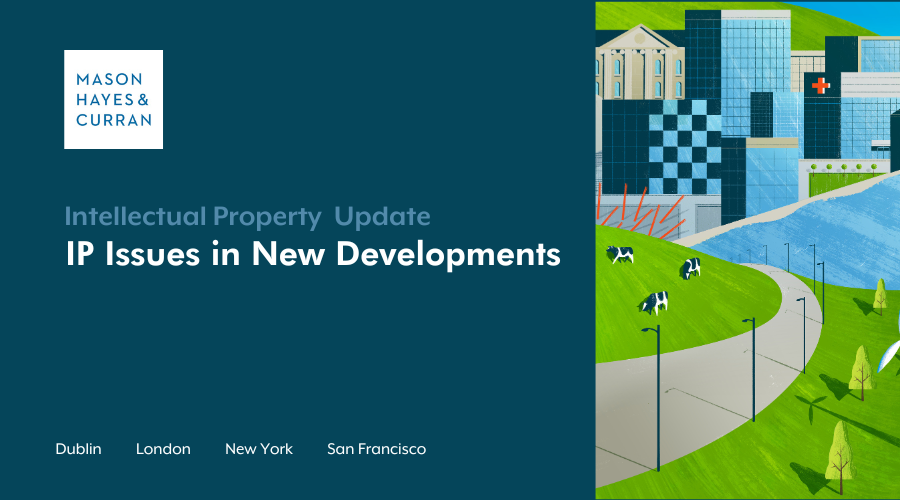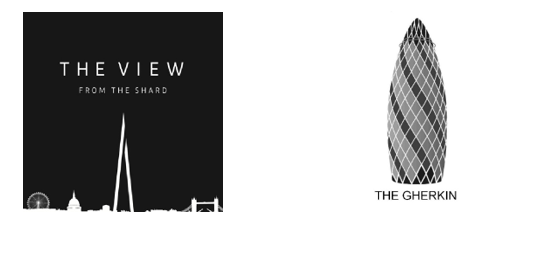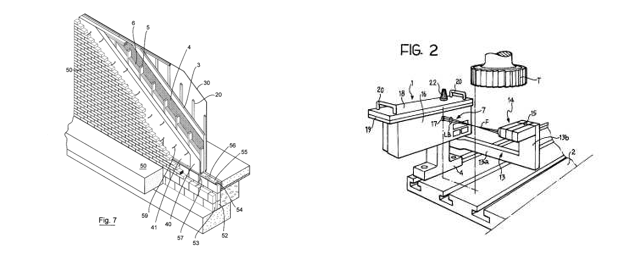IP Issues in New Developments

As can be seen from the value held in the naming of the Shard, the Gherkin and the Empire State Building, intellectual property is becoming increasingly important in the built environment sector. Our Intellectual Property team considers how property developers can take steps to best protect their IP rights in new development projects.
Intellectual property has become of increasing value and importance to developers and stakeholders in the built environment sector. Having an awareness of this value and taking steps to protect your intellectual property rights enables companies to bolster their value proposition, protect their innovations and fend off copycats and infringers. We consider some of the key IP issues which often arise with new developments, and how stakeholders in the sector can best safeguard their rights.
Trade Marks
A trade mark is a sign which is capable of distinguishing the goods or services of one undertaking from those of other undertakings. In short, a trade mark serves as an indication of origin. Trade marks may consist of:
- Words
- Designs
- Letters
- Numerals
- Colours
- The shape of goods or of the packaging of goods, or
- Sounds
They can be either registered or unregistered. In the built environment sector, trade mark issues commonly arise regarding building names, project names or business names where competing names cause consumers a likelihood of confusion. For example, businesses operating in the sector often include a family name in the name of their business or the name of the locality where the business operates. Although some of these trade marks do proceed to registration before trade mark offices, marks which contain a descriptive element such as a place name can be inherently difficult to register and/or enforce against third party infringers.
More commonly, trade marks are registered for the names of buildings. By way of example, ESRT Empire State Building LLC has registered a European Union Trade Mark (EUTM) for the mark EMPIRE STATE BUILDING protecting “real estate services”, “real estate affairs” and “real estate agency services” in Class 36. Similarly, Shard Viewing Gallery Management Limited has registered a EUTM for the figurative mark representing THE VIEW FROM THE SHARD below protecting “real estate affairs”, “property and capital investment”, “provision of commercial property” and “provision of residential accommodation” in Class 36 amongst a wide range of additional goods and services. Concerning building shapes, Stone Properties (Luxembourg) S.à.r.l. has registered a EUTM for THE GHERKIN figurative mark below to protect the name of its iconic and well-known London landmark for a wide range of goods and services in multiple classes.

The benefit to these companies of securing registrations is the ability to prevent potential infringers from using identical or highly similar names or designs for the goods and services which their registrations protect.
Copyright
As we outlined in our previous article, under the Copyright and Related Rights Act 2000 as amended in Ireland, artistic works include works of architecture, being either buildings or models as well as diagrams, drawings, plans and charts. In short, copyright material will be used at every stage of a development project from construction of a building to operation, repair and ultimate demolition. The benefit of copyright ownership is that it grants the owner the exclusive right to use, reproduce and to derive commercial benefit from the protected work for a set period of time. Stakeholders in the built environment sector will therefore need to be alive to who is creating the copyright work and if necessary, ensure that appropriate written agreements are put in place between those parties. It is not necessarily enough to simply pay for plans to be created without a proper assignment in place or licence to use.
Trade secrets
A trade secret is confidential business information which is used to give a business a competitive advantage. The preservation of the confidentiality of the trade secret is instrumental to retaining that competitive advantage. A trade secret can also be described as ‘proprietary information’ or ‘proprietary know-how.’ In the built environment sector, the following items could all be protected as trade secrets:
- Client lists
- Third party contracts
- Marketing strategy information, and
- Competitively sensitive information
Patents
The implementation of new technologies and innovations in the built environment sector may also be capable of patent protection. Patent protection grants exclusive rights to an invention for a certain period of normally 20 years from the date on which protection is sought. Patents can be sought for building frame structures or tools used in construction.

By way of recent example, the use of drone technology has significantly transformed how development and construction projects are planned and executed. The use of this technology enables high-resolution imagery to be used to plan and monitor the progress of construction projects. The development of similar or additional proprietary software, algorithms or inventions to improve processes or efficiency within project development will provide opportunities for companies to apply for patent protection.
Key takeaways
- When considering names for developments/buildings, descriptive words including place names and family names should generally be avoided.
- Before deciding on the name of a new development or building, appropriate trade mark clearance searches should be conducted. Although this may seem like an additional expense for companies at the outset, long term savings will be made where subsequent costly legal disputes are avoided.
- Trade mark protection should be considered not only for names but also for the designs, shapes and colours deployed where the ultimate mark is distinctive and serves as an indication of origin.
- Appropriate IP assignment agreements should be entered into with third party designers, consultants and architects engaged as part of the project.
- Appropriate non-disclosure agreements should be entered into with all third parties who are in receipt of confidential business information at all stages of the construction/development project.
For more information and expert legal advice on how best to protect your company’s intellectual property rights, please contact a member of our award-winning Intellectual Property team.
The content of this article is provided for information purposes only and does not constitute legal or other advice.
Share this:

Gerard Kelly SC
Partner, Head of Intellectual Property Law, Co-Head of Dispute Resolution
+353 86 820 8066 gkelly@mhc.ie

